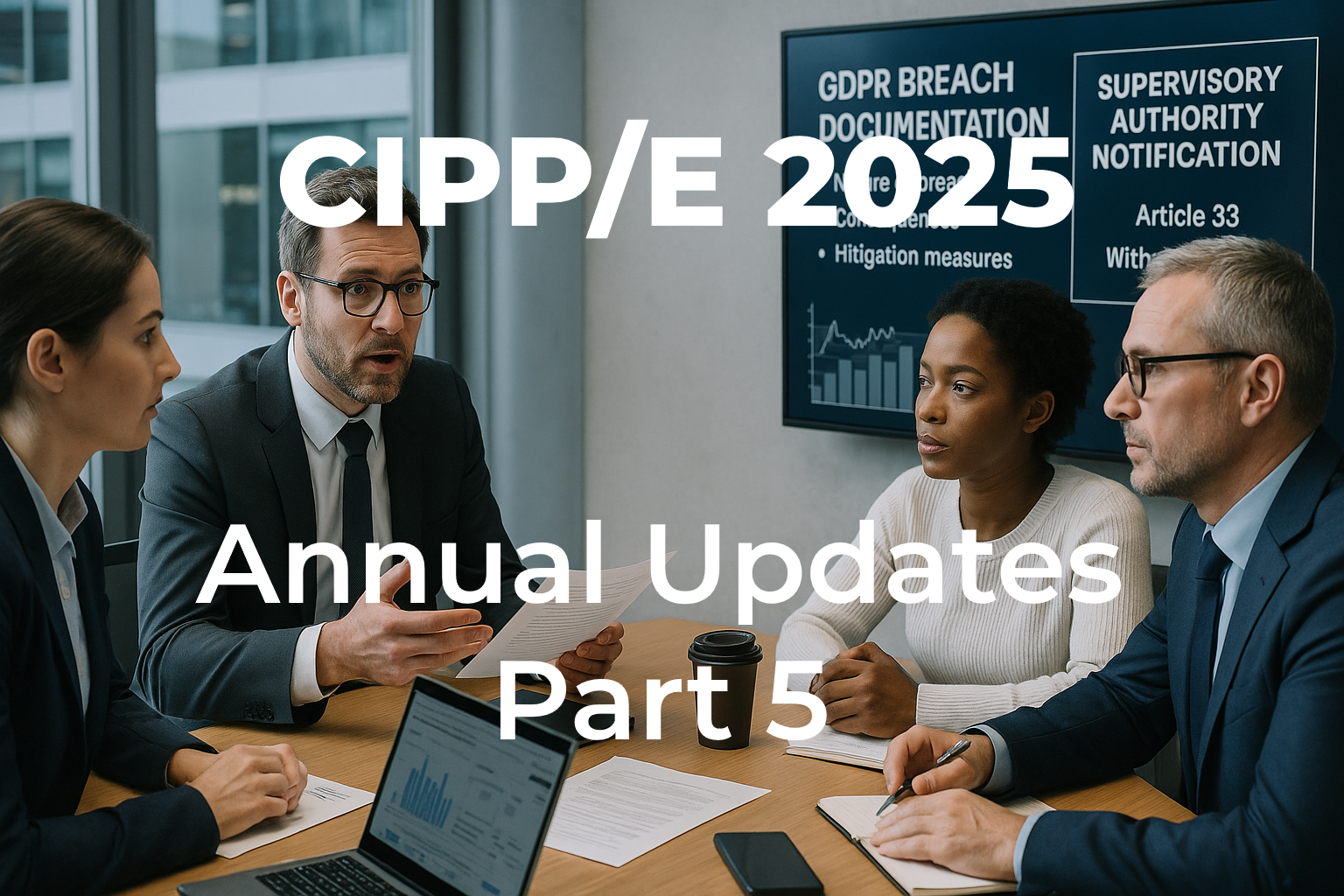GDPR breach notification and incident response
GDPR breach notification obligations are triggered when personal data is compromised. The regulation requires organizations to report qualifying breaches to supervisory authorities and, in some cases, notify affected individuals. Understanding when notification is required and how to respond is essential for legal compliance.
Why Privacy and Security Incidents Matter
Security incidents are common across all sectors. From ransomware to accidental disclosures, any event that impacts IT systems may have consequences for personal data. Not all security incidents qualify as personal data breaches under the GDPR, but those that do come with strict reporting timelines.
The 2025 revision of the CIPP/E curriculum reflects the importance of this topic. It emphasizes distinguishing between general security events and personal data breaches. This knowledge is essential for exam success and real-world compliance.
Defining Incidents and Breaches
A security incident is any event that affects the confidentiality, availability, or integrity of an information system. Examples include service outages or unauthorized access. If personal data is not involved, GDPR notification is not required, though internal response may still be necessary.
What Is a Personal Data Breach?
Article 4(12) of the GDPR defines a personal data breach as any breach of security that results in the accidental or unlawful destruction, loss, alteration, unauthorized disclosure of, or access to personal data. Breaches may be caused by cyberattacks, operational failures, or human mistakes. If the event meets this definition, notification rules may apply.
Supervisory Authority Notification Requirements
Under Article 33, data controllers must notify the competent supervisory authority within 72 hours of becoming aware of a personal data breach. Even if the full facts are not yet known, an initial notification must be submitted within the deadline, followed by updates when additional information becomes available.
The notification must address four essential elements:
- A description of the breach and the data involved
- The likely consequences for data subjects
- Actions taken or proposed to mitigate harm
- Contact details for further communication
If notification is delayed, the reason must be documented and justified. Supervisory authorities expect transparency and timely engagement.
Communicating With Data Subjects
Article 34 applies if the breach is likely to result in a high risk to the rights and freedoms of individuals. In such cases, controllers must notify affected data subjects without undue delay. The message must use clear, accessible language and explain the nature of the breach, its implications, and how individuals can protect themselves.
This obligation may not apply if specific safeguards were in place. For example, if the data was encrypted or if post-breach actions removed the risk, notification to individuals may be waived. In other situations, where direct communication would be disproportionate, public announcements can be used as a substitute.
Building an Incident Response Plan
A practical incident response plan ensures that GDPR breach notification requirements are met. This plan must guide the organization from detection to resolution and help determine whether notification duties arise.
The plan should support timely coordination between compliance, IT, legal, and communications functions. It must also include mechanisms to evaluate breach severity, document decisions, and prepare regulator-facing communications.
Key features of a strong incident response plan include:
- Monitoring systems for early breach detection
- A defined escalation process for internal reporting
- Risk assessment tools for evaluating impact on data subjects
- Prepared templates for notifying authorities and individuals
- Training procedures for staff involved in breach response
Clear documentation and a repeatable process reduce legal risk and promote regulatory confidence.
Post-Breach Evaluation and Cross-Border Coordination
The GDPR’s accountability principle requires organizations to learn from each breach. After managing an incident, teams should conduct a formal review to identify weaknesses in controls, refine procedures, and improve training. This supports continuous improvement in data protection practices.
When data subjects or processing activities span multiple EU Member States, the one-stop-shop mechanism in Article 60 applies. The lead supervisory authority, typically where the organization is headquartered, coordinates with other relevant authorities. This process requires early preparation, clear documentation, and alignment with cross-border reporting protocols.
Updates to the CIPP/E Curriculum
The latest version of the CIPP/E course now places greater emphasis on breach response. Learners are guided through breach scenarios, legal analysis of Articles 33 and 34, and evaluation of when notification duties apply.
The updated training helps professionals:
- Distinguish between reportable and non-reportable events
- Understand thresholds for risk assessment
- Apply notification requirements in real-world cases
- Align breach response with broader GDPR compliance efforts
This content reflects the growing demand for operational competence in data protection roles across Europe.



